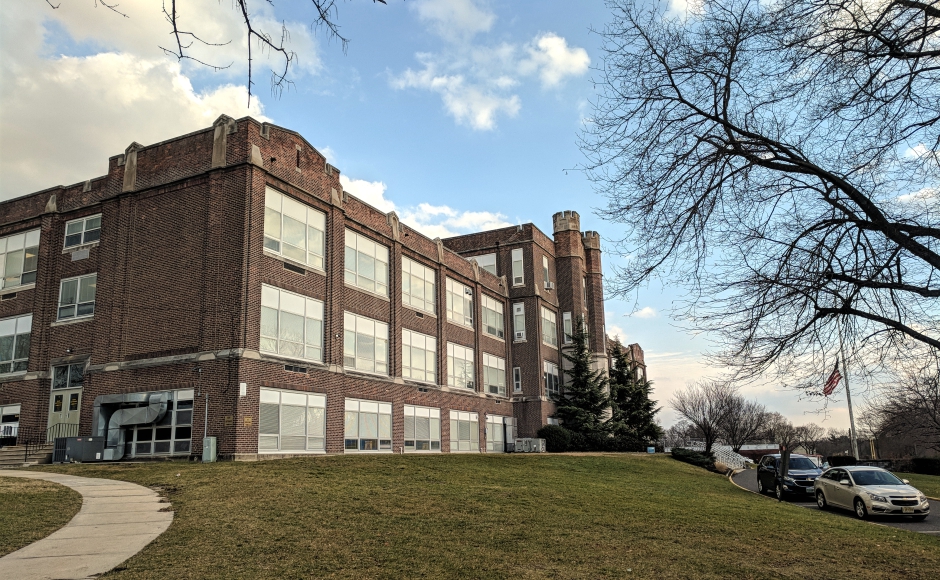District officials say they’re aware of the persistent issues, but don’t have many options to correct the problem. A spokesperson for the contracted bus company says drivers are harder to recruit than ever.
By Matt Skoufalos | October 1, 2021
Since establishing its send-receive agreement with the Haddon Heights school district in 2015, Merchantville high-school students have been bussed the six or so miles up Cuthbert Boulevard to Haddon Heights High School.
And throughout those six years, parents have reported significant delays getting their kids into school on time.
Merchantville resident Rebecca Callaway, who’s sent children to Haddon Heights High School since the relationship between the two districts was established, said bussing issues have been a persistent, annual problem.
It’s become routine for parents of high-schoolers to prepare parents of incoming freshmen that they’ll likely have to drive their kids to school most mornings, Callaway said.
“We go through it every fall without fail, from a few weeks to well over a month of problems,” she said.
“This year, with the driver shortage, parents have just hit their breaking point.”
Callaway said her children have been marked late or absent at least four times when riding the bus in just the first three weeks of school. She’s tried carpooling with other parents, but driving to Haddon Heights makes them late dropping off other children to the Merchantville School.
“Between last week and this week, I’ve gotten three calls that my kid’s gotten to school late,” Callaway said. “If we call and say, ‘It’s the bus,’ they’ll remove it, but that administration [in Haddon Heights] has to make these calls.”
Merchantville Chief School Administrator Scott Strong said the district is aware of the issues, and has been working to remedy the problem, but doesn’t have many options.
In the interim, Haddon Heights has increased the length of its homeroom times so Merchantville students who arrive late wouldn’t miss much of the first academic period, and the school has stopped marking them absent for reasons of bussing, Strong said.
“They understand it’s not the kids’ fault,” he said.
(Calls to the Haddon Heights School District seeking comment for this story were not returned.)
‘It’s not what we signed up for’
Merchantville sends 158 students to Haddon Heights High School under the terms of its send-receive agreement.
At 54 passengers apiece, that’s enough to fill two buses completely, with only four open seats on a third.
Two buses have been arriving on time or close to it, Strong said, but the third has been difficult to keep on track because its driver is completing a prior route before arriving in Merchantville.
“Our contract says they need to be dropped off between 7:45 and 7:50,” Strong said.
“Kids should be picked up by 7:25 to get to the school by 7:45 or 7:50.
“It’s not what we signed up for, but they can’t find drivers,” he said. “We’re in a holding pattern, waiting for the bus company to say they’ve found a driver. Once they do, those kids will be picked up at 7:25.”
Strong said that Merchantville is one among many districts across New Jersey that’s been affected by a shortage of bus drivers. The district is obligated to take the lowest-cost bid on its routes, even if it means not going with a transportation service that is more familiar with the community, or has driven the routes in the past, he said.
“This year, some districts didn’t even have people bidding on their bus runs,” Strong said. “We were fortunate that we had someone bid on all three routes.”
The district has considered a variety of remedies to the issue: seeking to combine its routes, contacting self-bussing districts to see if they have the ability to handle its additional passenger volume, even prorating its transportation payments to account for the days during which the students weren’t picked up on time. Strong said administrators are as frustrated as the parents are.
“I know many kids at 7:45 a.m. are finding an alternative route,” he said. “That’s horrible that they have to choose between waiting until then to figure out if this bus is going to show up.
“It is horrible,” Strong said. “It is unfair to the Merchantville parents. We are going to continue to stay on it.”
‘We have a huge shortage’
Meanwhile, transit companies continue to deal with an industry-wide bus driver shortage.
According to a joint survey conducted by the National Association for Pupil Transportation (NAPT), the National Association of State Directors of Pupil Transportation Services (NASDPTS), and the National School Transportation Association (NSTA), “every region of the country is currently altering transportation service due to COVID.”
A recap from The Register detailed a number of responses to the shortage, from the Philadelphia school district financially incentivizing parents to drive their own kids, to the Massachusetts National Guard being activated for the duties. Some analysts blame Amazon for hiring away potential drivers when schools were close to in-person instruction during the pandemic.
Susan Lippert, Human Resources Manager for the Holcomb Bus Company of Bellmawr, which has the contract for the Merchantville School District, said the company, like many others, is struggling to find personnel to staff its routes.
“We’re short bus drivers, and that’s across the board,” Lippert said. “Our hiring is an ongoing situation all the time, every year.”
That situation has been worsened by the impact of the novel coronavirus (COVID-19) pandemic, Lippert said. Many of its drivers didn’t want to return to work, “and a lot of people were afraid to come back,” she said.
“We have a huge shortage,” Lippert said. “A lot of buses that were not running last year are now running.”
Holcomb pays its drivers $22 an hour for a 20-to-25-hour work week, and is also offering a $1,000 sign-on bonus for drivers who complete its training program, Lippert said.
For those who don’t have a commercial driver’s license, the company also covers the costs associated with becoming a school bus driver, including fingerprinting, a background check, drug testing, a Department of Transportation-mandated physical exam, CDL learner’s permit, and 40 hours behind the wheel. In total, that’s about $2,000, Lippert said.
“It’s a long process from walking in the door,” she said; “you’re talking eight to 12 weeks before you have your CDL in your hands.”
The job is most appealing to people who need part-time or supplemental income, including retirees and stay-at-home parents, Lippert said, but the hours also substantially limit the applicant pool.
Nonetheless, she said companies like Holcomb are continuing to try to staff their bus routes.
“This is our 100-percent top priority,” Lippert said.






